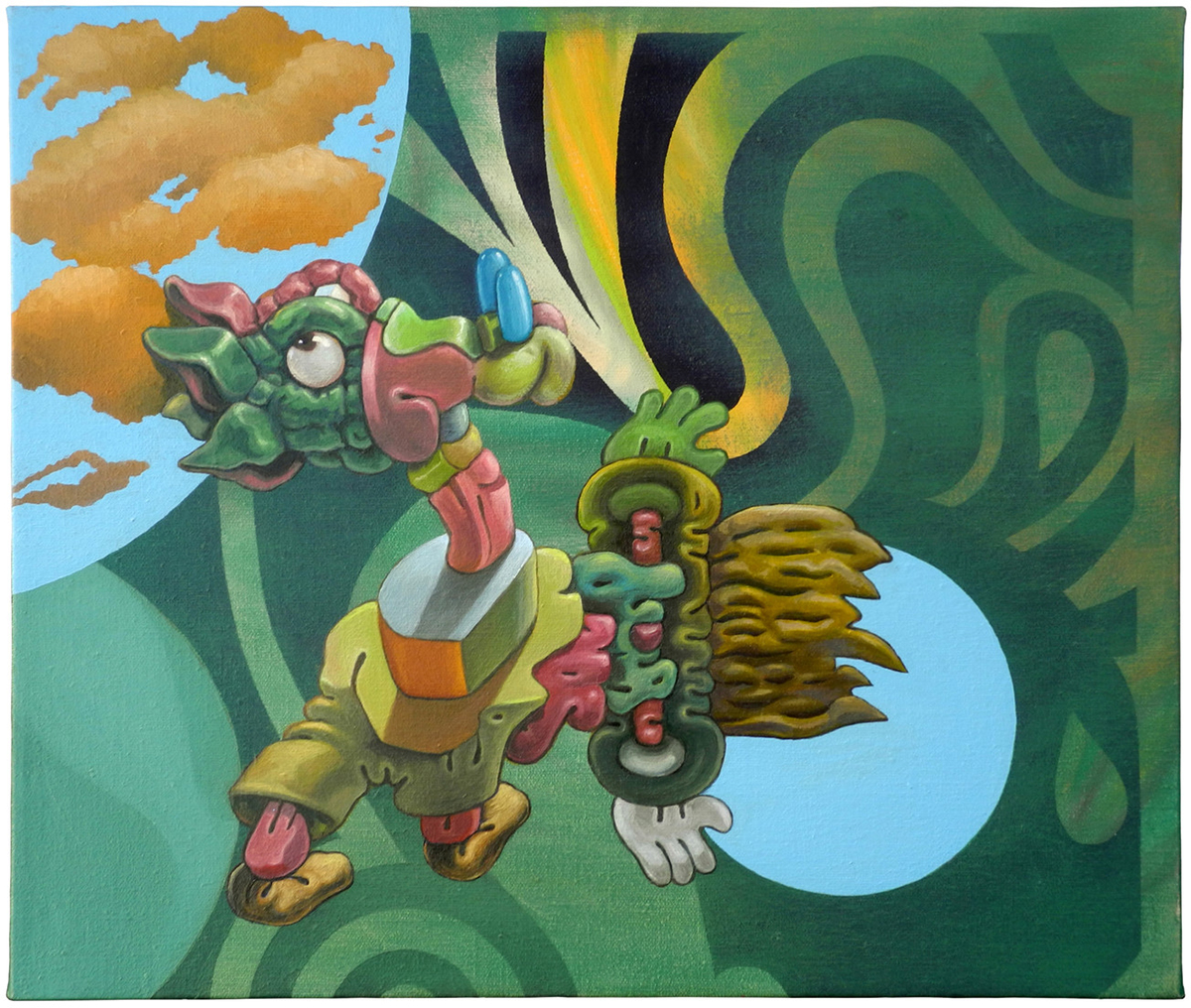
Altered Logistics: Redux
D. Dominick Lombardi, Curator
The first exhibition of Altered Logistics was subtitled Contemporary Collage and Appropriation Art. It was co-curated by Max Tuja (aka: Max-O-Matic) and held in 2023 at SUNY Cortland/Dowd Gallery in Cortland, NY. The selection of art back then stemmed from our passion for collage in all of its forms and philosophies, which in turn became the main focus of the original exhibition.
For this latest version of the exhibition Altered Logistics: Redux, I continue the emphasis on collage as it best describes the method of combining previously unrelated elements that form a new message, emotion or narrative. This can be easily seen in eleven of the sixteen artist's works in Altered Logistics: Redux. In addition to these eleven artists, I have selected five artists that focus more on that moment of change, when the cognitive reprocessing of intake and altering strikes. In addition to these two sides of the general concept, "Redux" has both analog and digital examples of art, allowing me to continue the international take on the subject. As a result, this exhibition ends up being a complex visual experience, and one that I hope brings new insights and inspiration to all that see it.
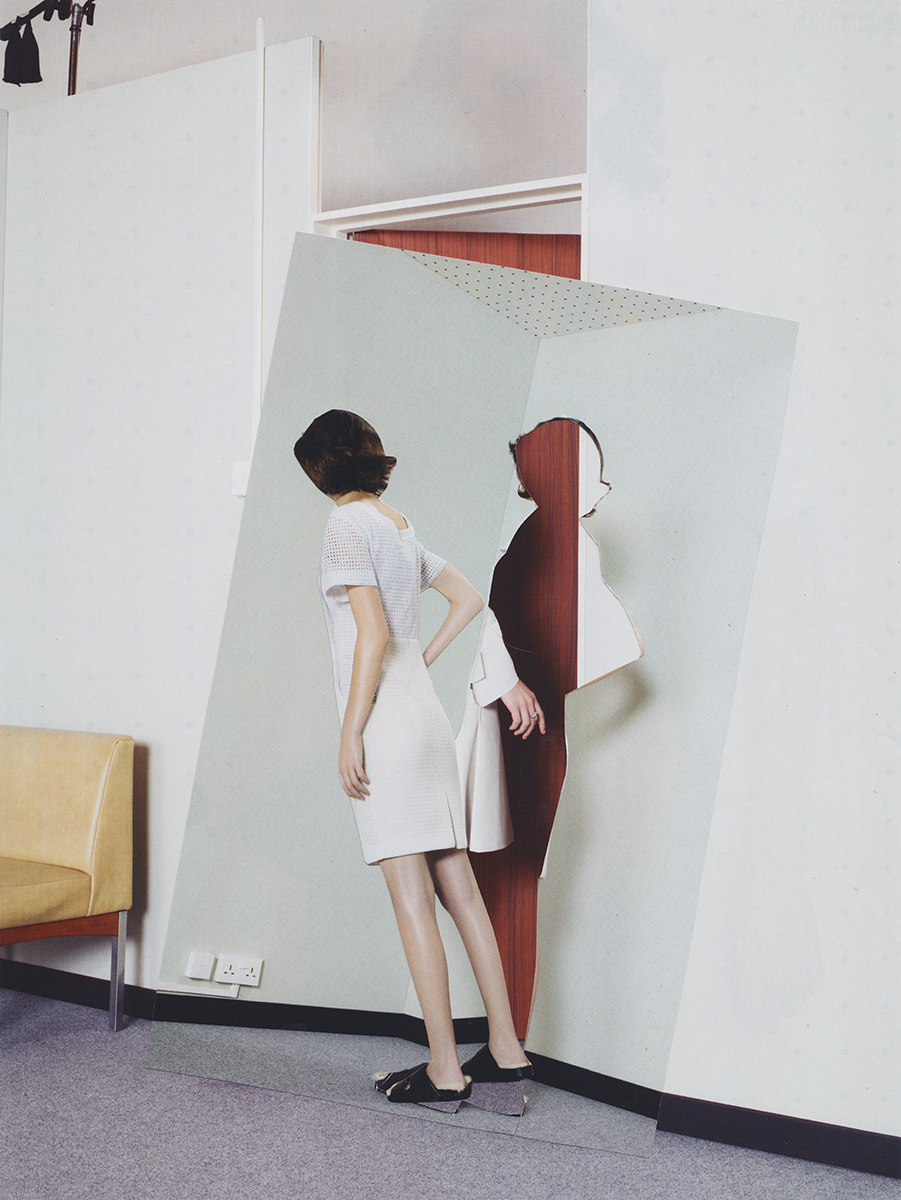
Beginning with the more collage leaning creators who expand the concept of logistics is Lima, Perú based Erick Baltodano. Baltodano boils down his method and message to its most basic elements while challenging our understanding of just what consciousness entails. Whether it stems from a knockout punch in the boxing ring, or our relationship with the more mundane physical day-to-day world, Baltodano shifts his focus to that transitional space between dimensions, thus shifting our understanding of time-based reality.
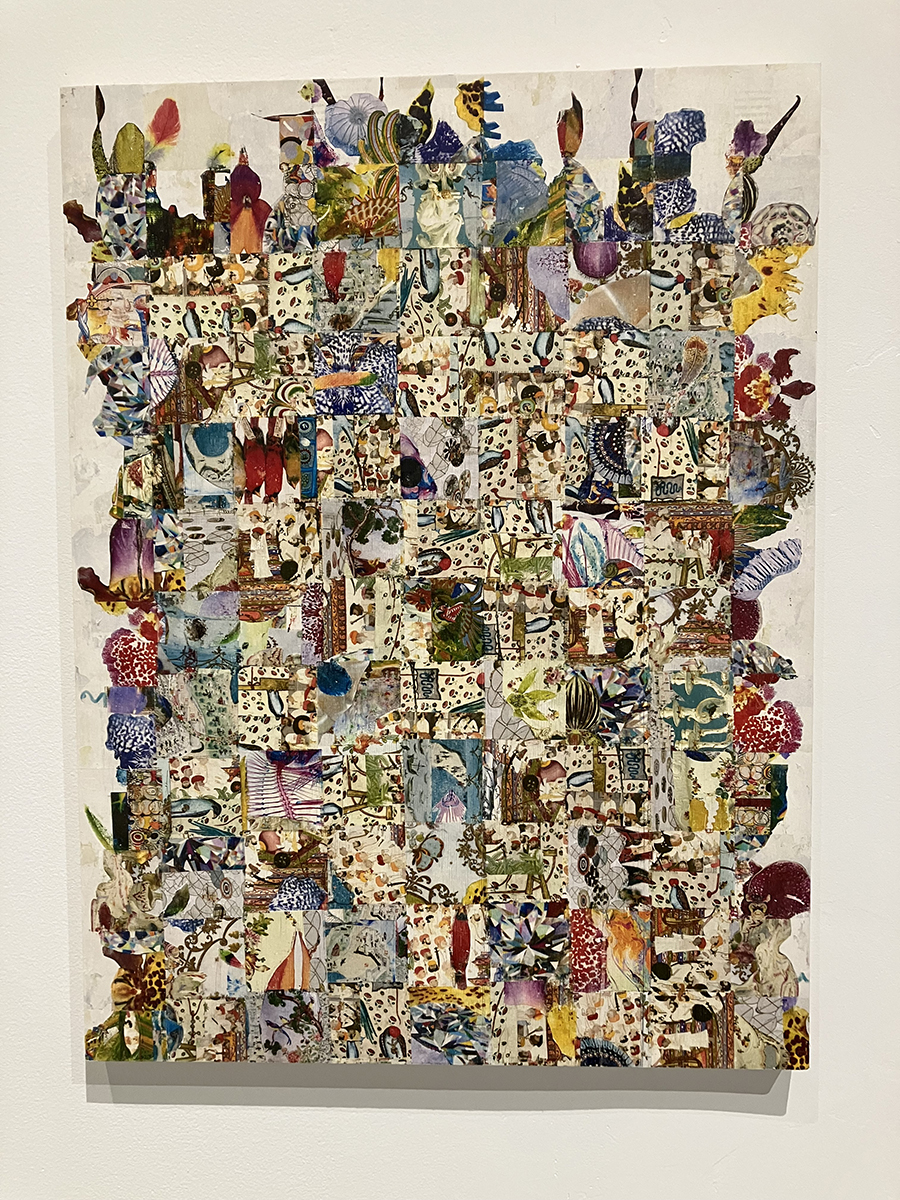
New Yorker Joel Carreiro's multicultural menageries of heat transferred images from fine art and design books are a mesmerizing reshuffling of our global visual history. From a distance, Carreiro's art looks like a colorful and compelling mass of minutiae with no specific reference. Up close, snipits of vaunted visuals known and new emerge quickly, blending together to form odd connections and jazzy juxtapositioning that constantly alters our own understanding of reshaped perceptions.
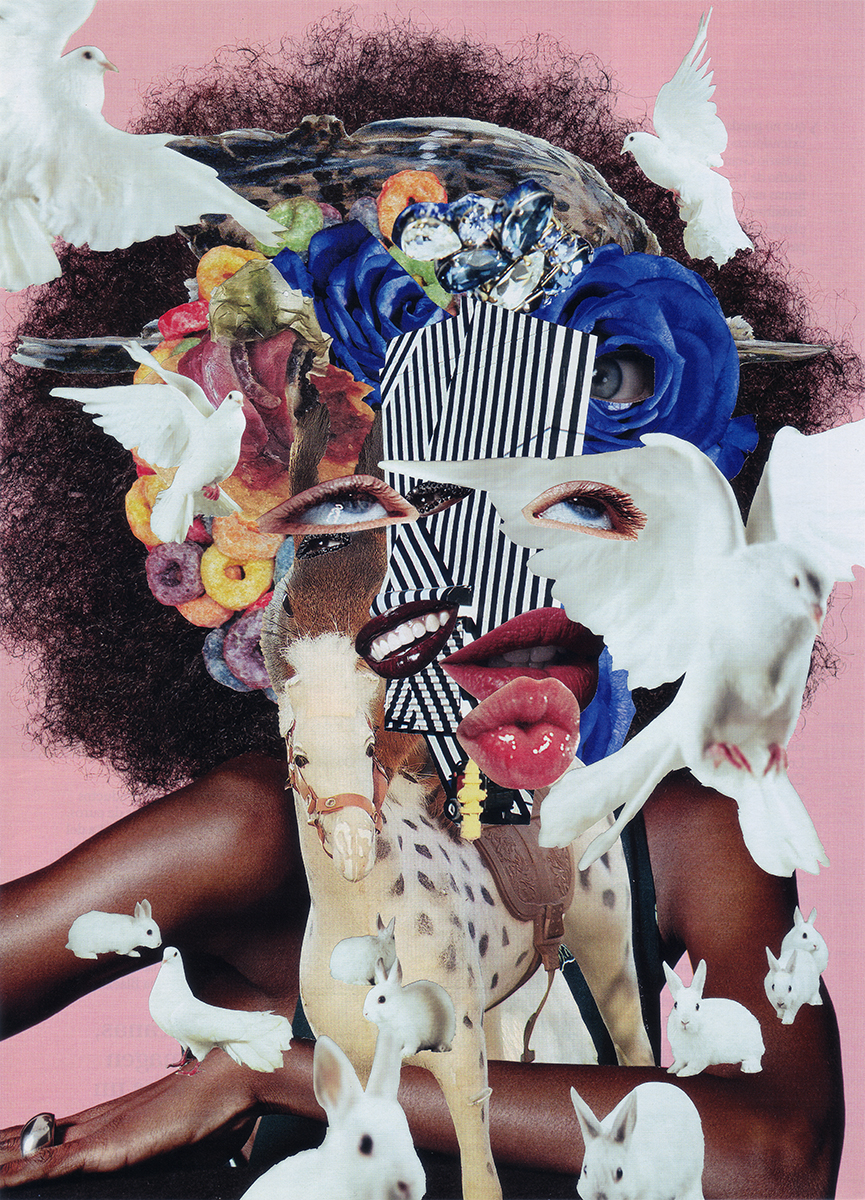
Cless, an artist based in Valladolid, Spain, focuses on representing the five senses to create individual portraits that appear to be more alive than any representational image would suggest. Cless attains this by breaking the facial planes in key areas to extend or emphasize their reach. As a result, the Surrealistic aspects of his art enables the artist to introduce multicultural elements, as the once individual portraits now become open ended and more broadly interpreted, depending on the individual viewer’s own experiences.
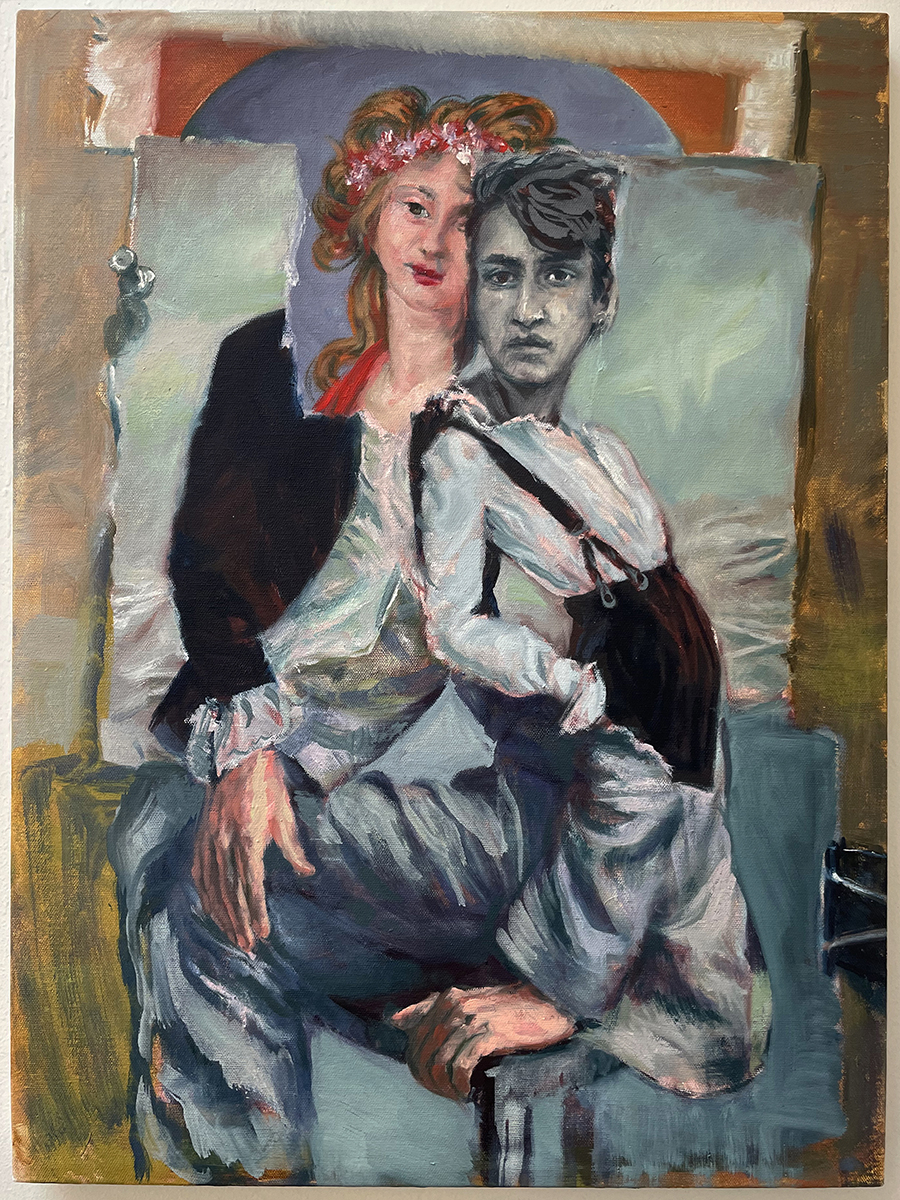
Brooklyn based Don Doe alters his logistics with fractured elements as well, only in this instance the artist is more focused on the pressures and absurdities of body image and gender roles across time. Doe accomplishes these vastly important subjects by collaging together loosely related visual references from a litany of magazines, and finding just the right combination of segmented images. When combined, his art produces a challenging take on society’s built-in tendency to distort and derange.
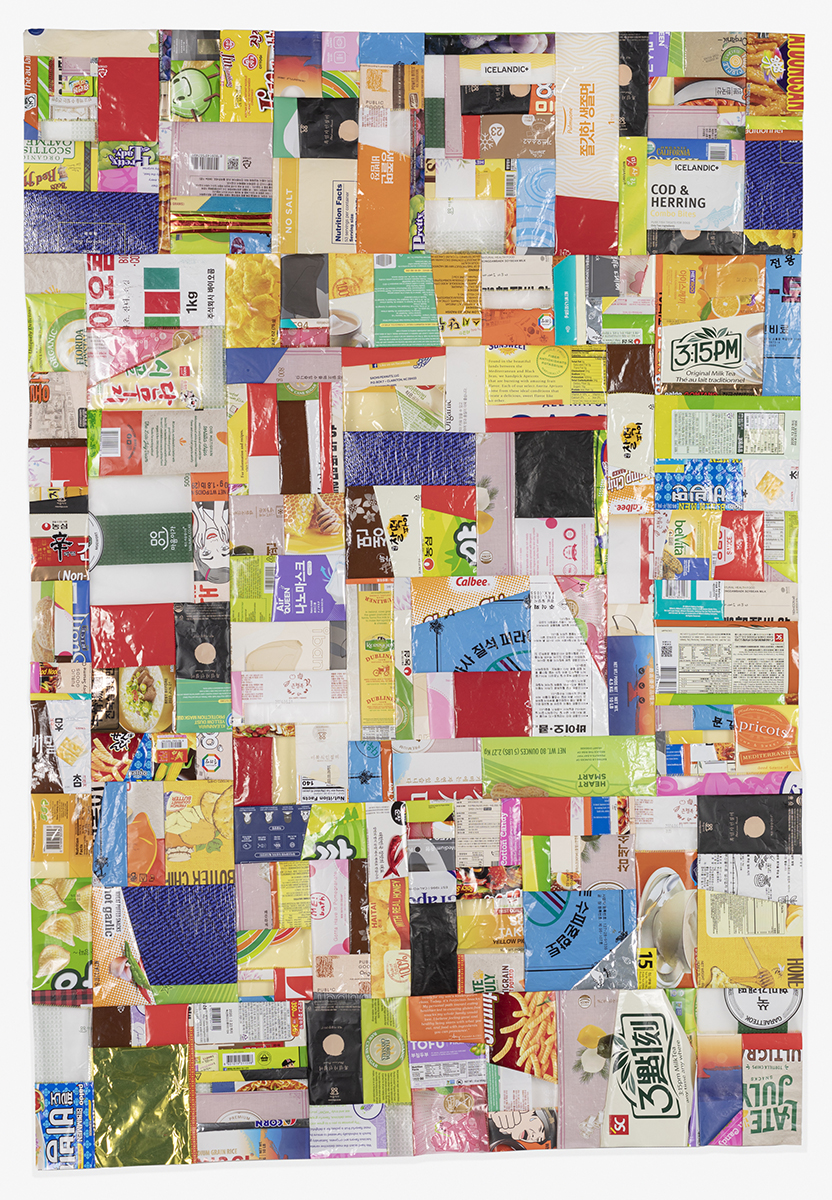
New Yorker Yeon Jin Kim puts a contemporary spin on the art of traditional Korean Jogakbo with her stitched together found plastic sheets. Using mostly from shopping bags and decorative packaging, Kim’s art is both visually compelling and socio-environmental, leaving viewers with much to think about regarding the time we live in. Does endless labeling, branding and advertising alter our decision making? Is it sinful/wasteful to fall into the trap of the ubiquitous plastic shopping bag? Or is the artist making a statement about understanding an altered individuality in a time when more and more of us are becoming logistically tribal?
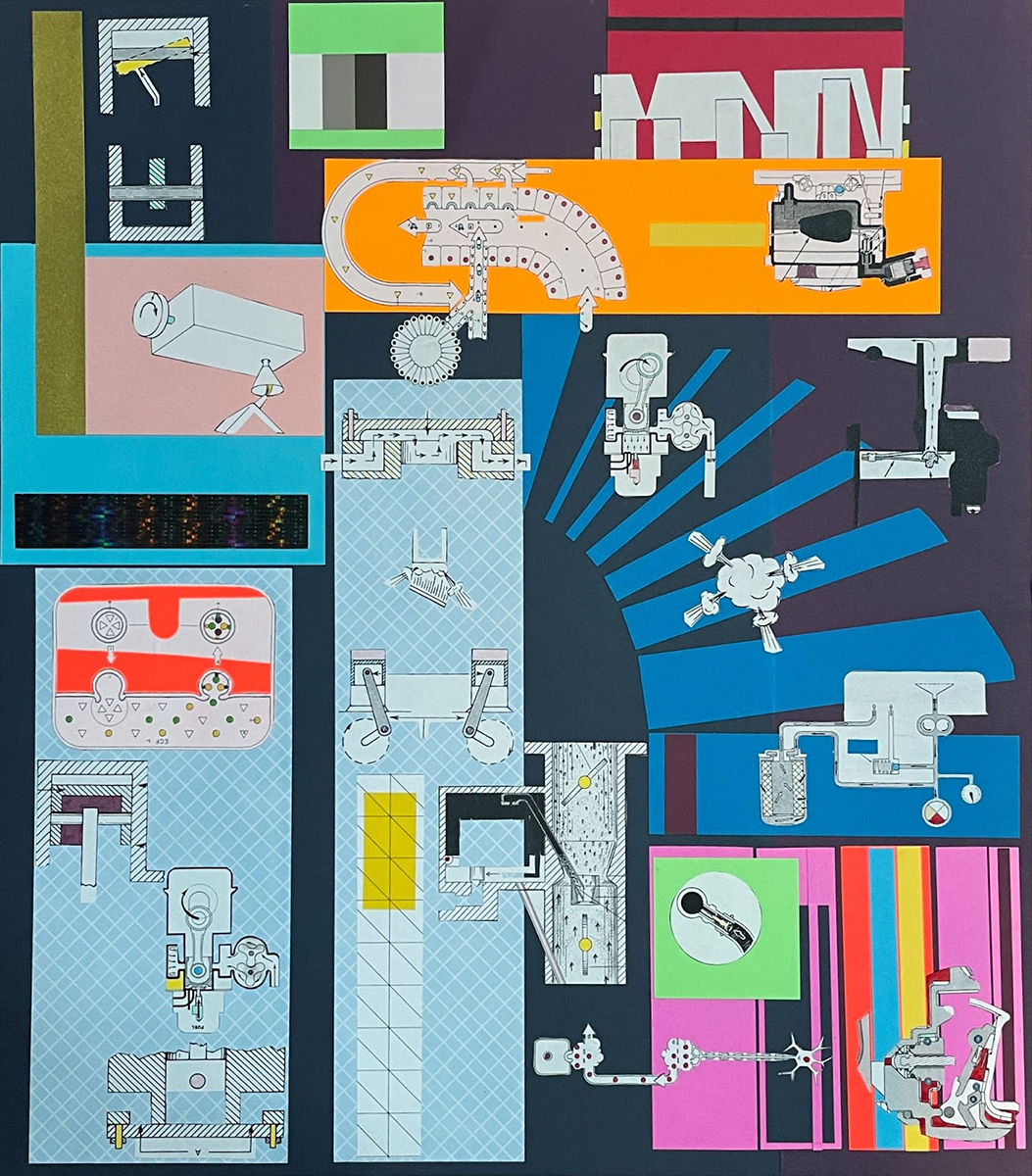
Kentuckian T. Michael Martin draws our attention to the prevalence of the machine, especially the ones that get us from place to place, compute, keep us focused or watch our every move. The time of finding our own way has long been obliterated from all sides as we bounce from point to point like a pinball in a world where we have lost too much control over our own devices. On the other hand, Martin's art puts things into perspective in more ways than one, as he carefully coordinates color and movement in his compelling and contemplative compositions.
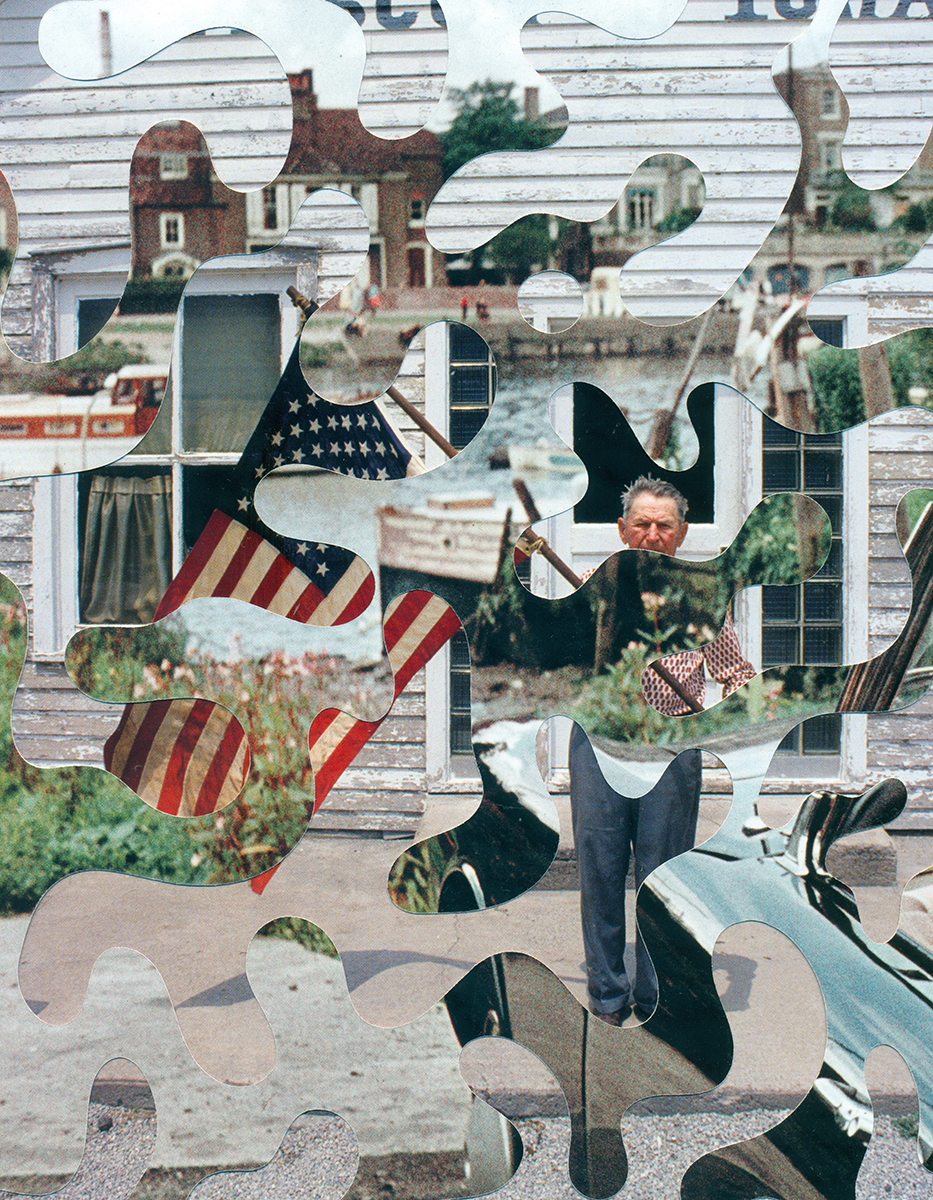
Based in Madrid, Spain, Max-O-Matic shows an altered state that includes two distinctly divergent worlds crossing paths without canceling the other out. The key alteration is aesthetics, followed closely by the socio-political aspects of today's unleashed mixed-beliefs. As a result, Max-O-Matic shows how a relatively direct method can change the flow of logistics visually as two points of view collide and somehow coalesce, while enhancing the strength and meaning of both.
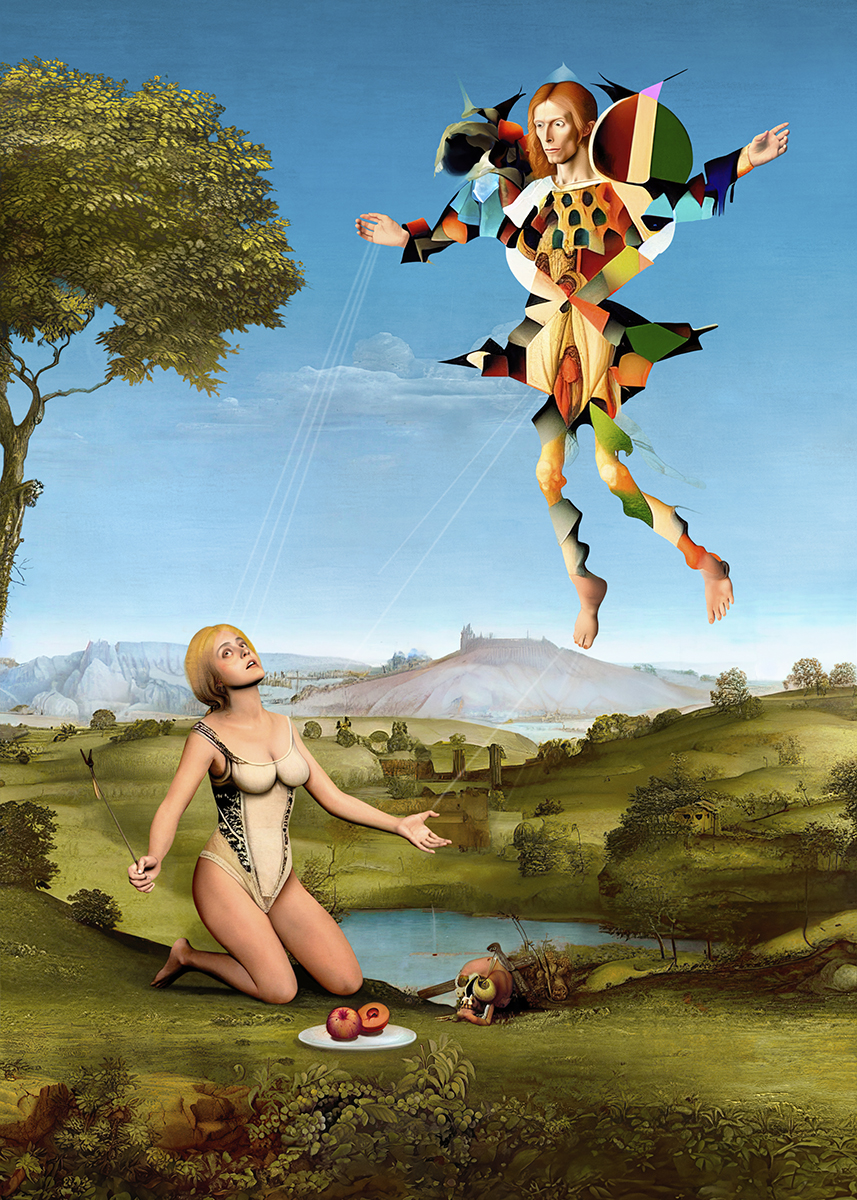
Hamilton, Ontario, Canada resident Kevin Mutch alters our thinking in a whirlwind of subjects from creationism to creativity. He gets to the heart of each issue with a flair for the dramatic and an understanding of the narrative that may remind some of the art of the Renaissance, while the depth of his imagery, and the presentation of his thought process is more than modern. There is also humor in these works, a feeling that life is a playing field for one's imagination, a way of entertaining oneself. In the end, it is Mutch's unique ability to communicate complex thoughts that move us past logic and belief.
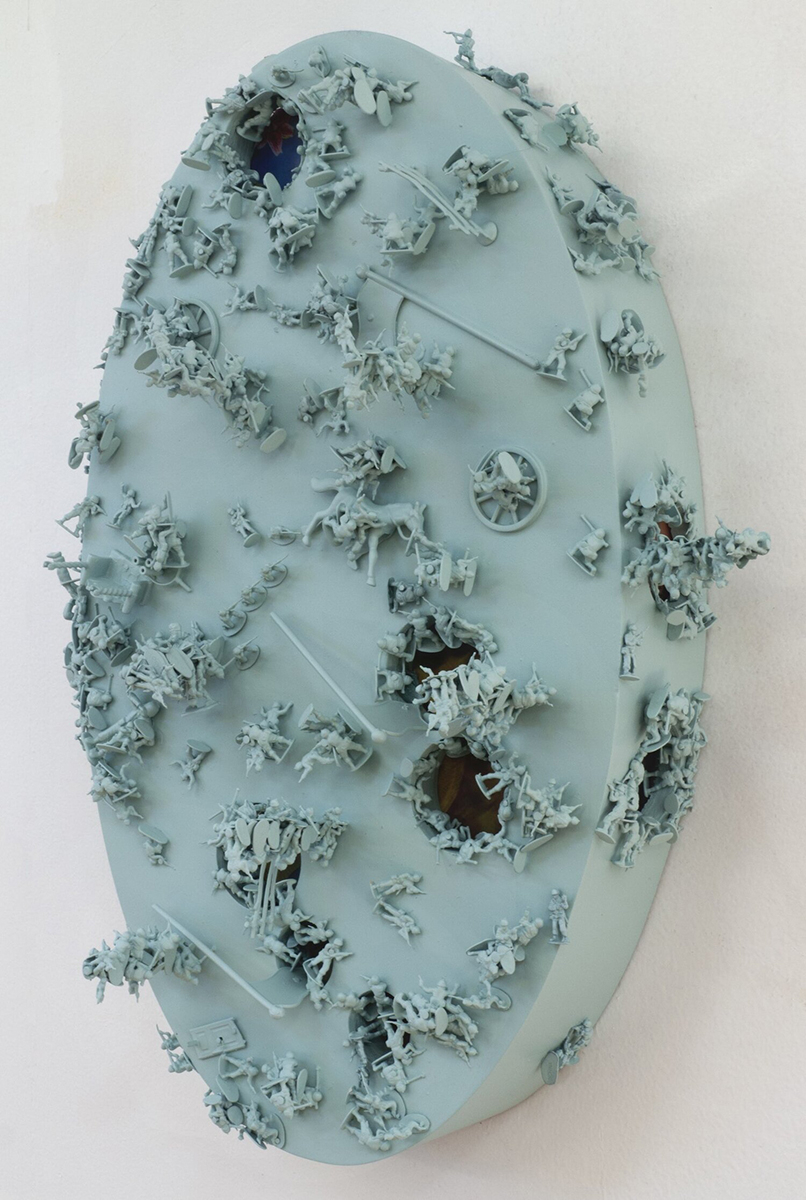
Margaret Roleke of Connecticut addresses the general understanding of such broad subjects as war and religion, and moves these topics into an arranged state so we can see how they relate. Controlling people's rights and beliefs, and conquering new lands are, of course, a big part of it. With Roleke's art, we are reminded that in order to motivate the masses, one must control minds and bodies to alter the logistics. Wars don’t happen and religions can not be established without the masses, and without the ability to control thoughts and ethics in some way or form.
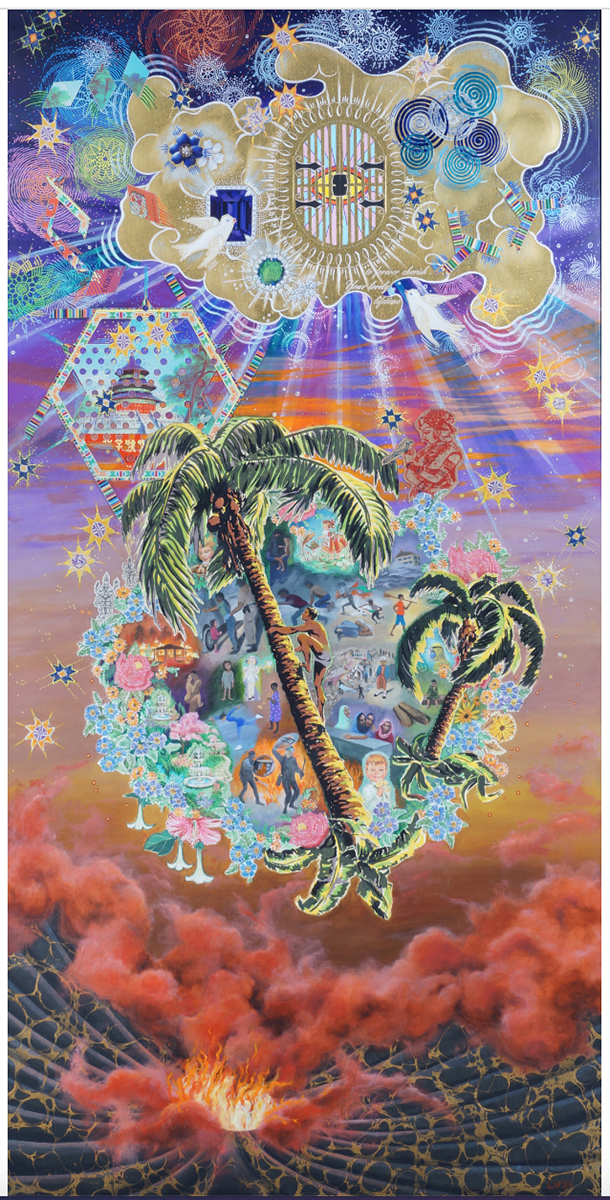
Lydia Viscardi of Connecticut brilliantly mixes metaphors that both dig deep and expand exponentially. Using both the familiar and the otherworldly, Viscardi presents a new take on how we develop as human beings, how we cope with life’s ups and downs, and where we are and what we may believe in. In the end, it’s about that sweet spot between heaven and Home Depot, being grounded or lost, or pining for some place just out of reach, where fantasy and reality coalesce.
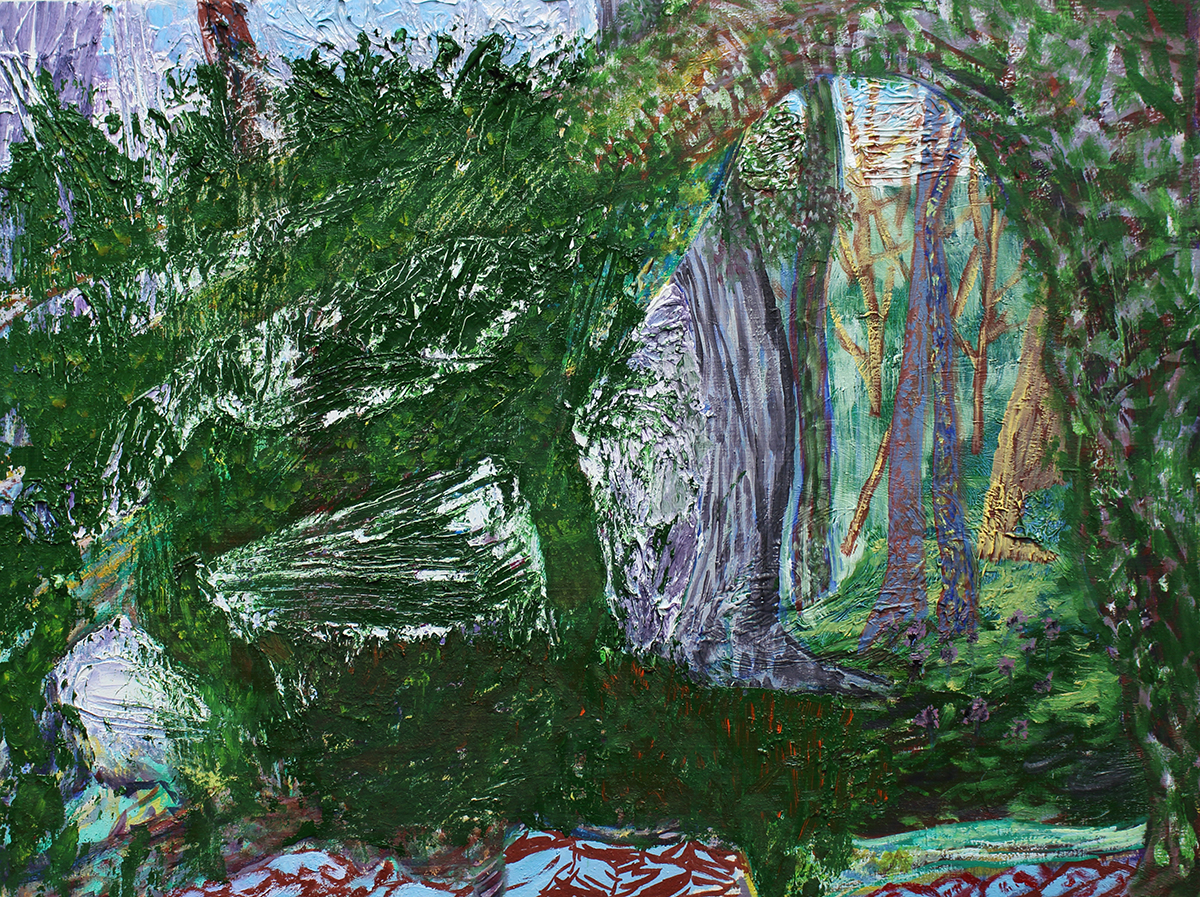
Brooklynite Cecilia Whittaker-Doe reinvents the concept of the landscape, altering color, proportion, placement and logistics. In so doing, she reveals a multi-dimensional field where fractured vistas are repositioned in a semi-kaleidoscopic way that alters any sense of gravity or physics. Like a dream, we are presented with a disjointed narrative that is somehow pulled together by a thread, edging in continuity and clarity.
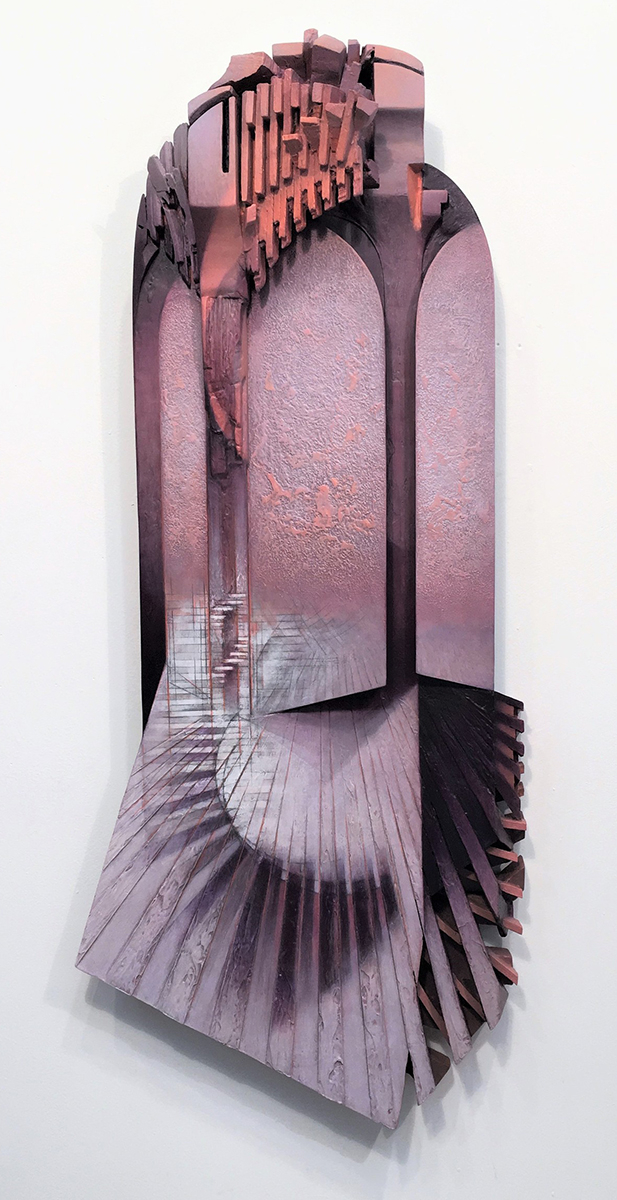
From the experience of change, or when the moments of cognitive processing of space and time strikes there is Serdar Arat of New York. His art alters our conception of flow that architects depend on, and how we perceive our own movements in both familiar and foreign lands. In Arat's wall reliefs there is also that distinctive spiritual side that comes from the element of antiquity, especially in the displaced details. It's that familiar feeling of the passage of time, that experience of seeing, breathing in and touching an ancient or past world for that matter, that sticks with us forever, altering our understanding of just who we are in the grand scheme of things.

Connecticut artist Vincent Dion uses a very familiar symbol, the Color Vision Test, to get his message across. From the intense written reality of "I ADMIT I AM POWERLESS OVER ART AND MY LIFE HAS BECOME UNMANAGEABLE" to the benignly humorous "COLORFIELD," Dion informs us that being an artist is both a blessing and a curse. And like artists who have used text in the past to make their thoughts known, Dion relies on the viewer's own personal experiences and the thoughts that ensued to be tapped and adjusted, altering minds away from the preconceived to the angst of the artist.
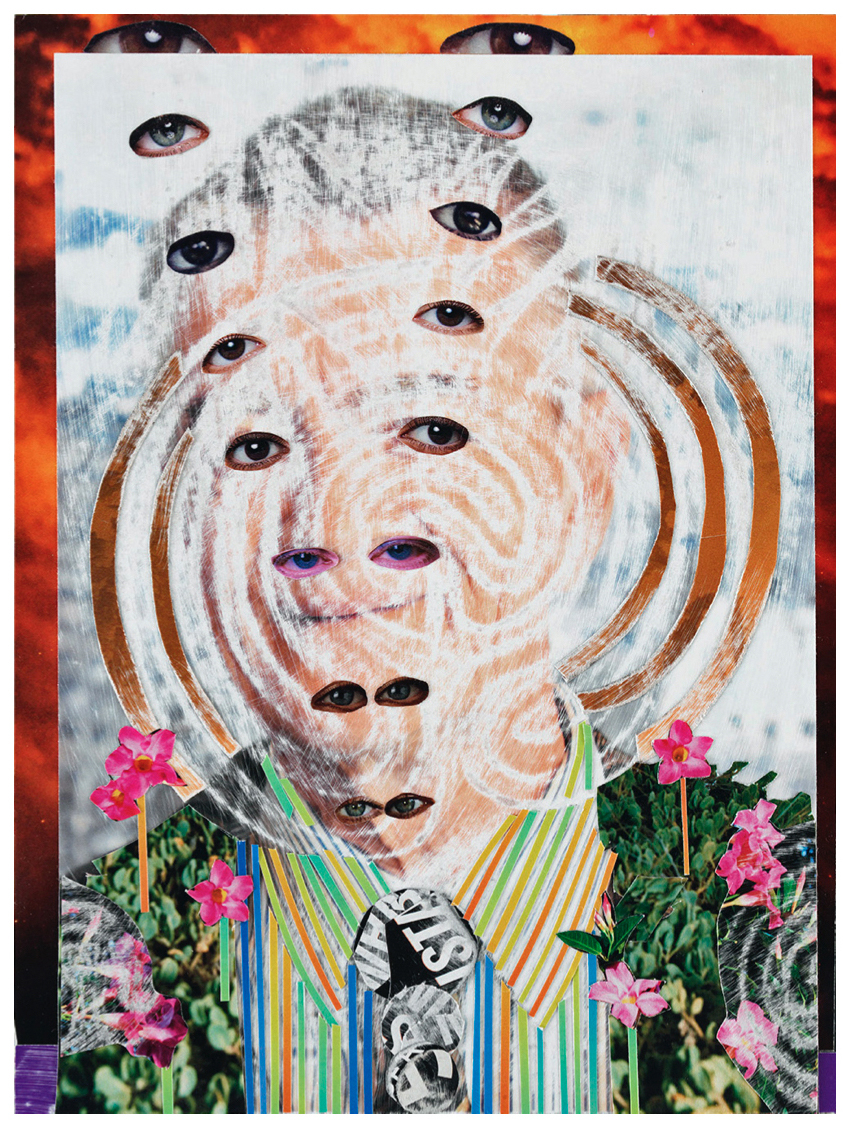
Brooklynite Paul Loughney's logistical bent is more about seeing and processing, and how we may alter our conclusions given change in circumstance. Loughney's art reveals the different ways we "see," and how those sights seep in solid then, dispel into the far reaches of space. There is also the presence of the collective unconscious here, or maybe it's just how we process seeing as we filter and form visual information moment to moment, day to day and year to year.
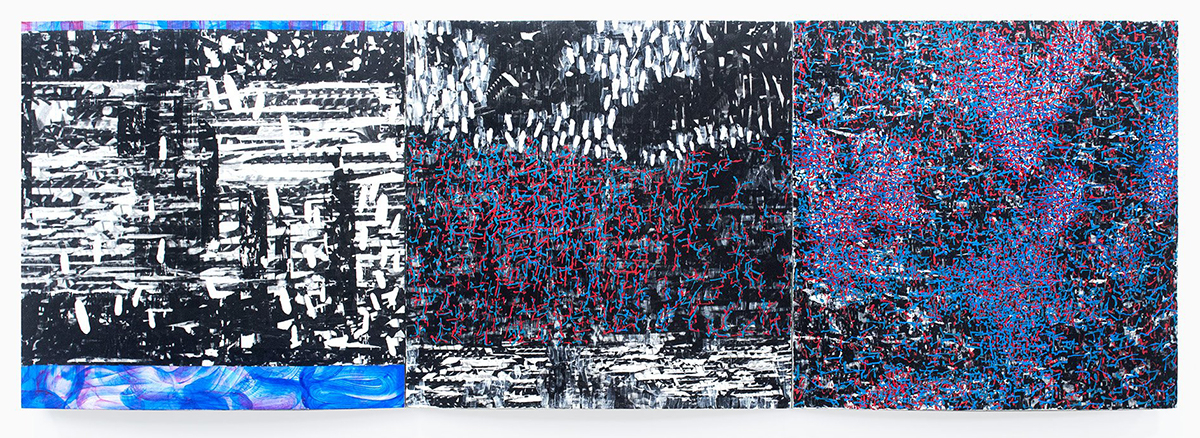
Creighton Michael of New York brings us directly to the point of perception, that nano second when light and dark first enter the retina and are translated by the brain. Light comes in waves, the processing of that information has to be deciphered and compartmentalized otherwise we can not function successfully. So we must alter and logically implement what we perceive around us and Michael's art reveals those subtle changes that are normally imperceptible, showing us the beauty of what we are missing.
In my own work (image at top), there is a fascination with the theme of the exhibition, and how that may change the appearance of the person who is experiencing Altered Logistics on the brain. Done in a Pop Surreal, dark comedic way, I tend to lean aesthetically, more toward the strangeness of Lowbrow art to get my point across. I also rely heavily on mental image flashes that I believe come from the collective unconscious. I am based in New York State.
--------------------------------------------------------------------------
Altered Logistics: Redux will be featured at the Clara M. Eagle Gallery, Murray State University, Murray, KY, from August 26 to September 20, 2024.
